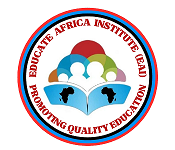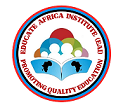The Role of Gold and Lithium Mining in Ghana’s Projected GDP Growth: Prospects for 2025 and Beyond

Introduction
Ghana’s economy is poised for a significant transformation, with the mining sector particularly gold and lithium—playing a pivotal role in the nation’s projected 5.4% GDP growth in 2025. This article delves into the quantitative aspects of Ghana’s mining industry, examining the contributions of gold and the emerging lithium sector to the country’s economic trajectory. Ghana stands at a pivotal moment in its economic evolution, with the mining sector once again taking center stage as a key driver of growth. Traditionally anchored in gold production, Ghana has consistently ranked among the top gold-producing nations in the world, with the sector serving as a cornerstone of government revenue, foreign exchange earnings, and employment generation. However, as global economic demands shift toward cleaner and more sustainable energy sources, Ghana is positioning itself to capitalize on a new frontier in mineral wealth: lithium.
Standard Bank projects Ghana’s economy to grow by 5.4% in 2025, a substantial rebound driven in large part by the revitalization of the gold mining industry and the anticipated emergence of large-scale lithium production. The flagship Ewoyaa Lithium Project, scheduled to begin operations in 2025, is expected to complement the already robust performance of gold by introducing a strategic resource critical to the global clean energy transition. This dual resource focus not only diversifies the mining sector but also offers a new path for long-term economic resilience and industrial transformation.
This article explores the quantitative impact of gold and lithium mining on Ghana’s projected GDP growth for 2025 and beyond. Drawing on economic data, sectoral contributions, and investment forecasts, it examines how these two mineral resources are poised to shape the country’s economic landscape. By providing both historical context and forward-looking analysis, the article aims to offer media stakeholders, policymakers, and investors an evidence-based outlook on the mining sector’s evolving role in Ghana’s development story.
Brief Review of Related Literature
The extractive industry, particularly mining, has long been a significant pillar of Ghana’s economy. Numerous studies have highlighted the contribution of gold mining to GDP, foreign exchange earnings, employment, and fiscal revenue. According to the Ghana Chamber of Mines (2023), gold alone accounted for over 50% of Ghana’s total export revenue, reinforcing its position as a key economic driver.
Empirical research by Aryeetey & Baah-Boateng (2019) shows a strong positive correlation between mineral export performance and GDP growth in Ghana, with gold consistently leading the sector. Similarly, Boafo et al. (2021) argue that the modernisation of gold mining operations has spurred local industrial development, but also point to environmental trade-offs and socio-economic displacement concerns.
While gold’s role is well documented, lithium mining is a more recent addition to Ghana’s resource portfolio. The global demand for lithium, driven by the green energy transition and electric vehicle (EV) markets, has attracted significant investment interest. The Ewoyaa Lithium Project, backed by Atlantic Lithium and Ghana’s Minerals Income Investment Fund, is expected to generate substantial revenue and employment from 2025 onwards (Atlantic Lithium, 2024).
Studies such as World Bank (2022) and IMF Country Reports (2023) suggest that the introduction of strategic minerals like lithium could diversify Ghana’s extractive economy, reduce dependence on gold, and position the country competitively in the clean energy value chain. However, they caution that governance, regulatory frameworks, and fiscal discipline will be essential to maximize the developmental impact.
In sum, the existing literature underscores the historical importance of gold and the emerging potential of lithium in influencing Ghana’s economic trajectory. This study contributes to the evolving body of work by quantitatively assessing their projected roles in GDP growth from 2025 onward, bridging established findings with forward-looking insights.
Research Design
This study adopts a quantitative research design using secondary data to evaluate the impact of gold and lithium mining on Ghana’s projected GDP growth in 2025 and beyond. The approach is descriptive and analytical, aiming to identify trends, correlations, and projections based on historical and current macroeconomic indicators.
Data Collection
Data Sources
Data was gathered from reliable and authoritative secondary sources, including:
Ghana Statistical Service (GSS)
Ministry of Finance and Economic Planning
Bank of Ghana
Ghana Chamber of Mines
International Monetary Fund (IMF)
World Bank
Standard Bank Economic Forecasts
Atlantic Lithium Ltd. and Ewoyaa Project Feasibility Reports
Statista and Trading Economics
Time Frame
Data spans from 2013 to 2024 for historical analysis.
2025 to 2027 projections were included based on current trends and official forecast models.
Variables and Indicators
Dependent Variable:
Ghana’s GDP Growth Rate (Annual %)
Independent Variables:
Gold Export Earnings (USD)
Lithium Projected Output (tonnes per annum)
Mining Sector Contribution to GDP (GHS & % of GDP)
Tax Revenues from Mining
Employment in the Mining Sector
Control Variables:
Inflation Rate
Exchange Rate Volatility
Global Commodity Prices (Gold and Lithium)
Fiscal Deficit (% of GDP)
Analytical Tools and Techniques
Descriptive Statistics: Used to summarize the economic indicators and present trends in tabular and graphical form.
Time Series Analysis: Applied to assess the mining sector’s contribution to GDP over time.
Trend Projections: Forecasted mining output and revenues using linear trend models based on historical data.
Correlation Analysis: Explored the strength of relationships between GDP growth and gold/lithium output.
Comparative Analysis: Compared contributions from gold mining versus projected lithium mining over time.
Software Used:
Microsoft Excel for data cleaning, tabulation, and basic statistical functions.
Presentation of Data
Tables were used to present export earnings, fiscal indicators, and GDP growth projections.
Figures (line and bar charts) were used to illustrate trends and comparative growth in the gold and lithium sectors.
Infographics and project timelines visually conveyed the development of the Ewoyaa Lithium Project and its expected economic impact.
6. Limitations
The study is limited by the availability of current lithium output data since large-scale production is expected to begin in 2025.
Assumptions made in GDP projections depend heavily on global market conditions and government policy implementation.
Currency fluctuations and unforeseen political developments may impact the accuracy of projected economic outcomes.
Gold Mining: A Pillar of Economic Stability
Gold has long been a cornerstone of Ghana’s economy, contributing substantially to its GDP. In 2023, the mining industry contributed approximately GHS 14 billion (about $944 million) to Ghana’s GDP at constant prices, marking the highest contribution since 2013.
Table 1: Gold Mining Contribution to GDP (2023)
Indicator
Value
GDP Contribution (GHS)
14 billion
GDP Contribution (USD)
944 million
Year-over-Year Growth
7.7%
Source: Statista (2025)
The gold sector’s resilience is evident, with projects like the Obuasi mine ramping up production, further solidifying gold’s role in Ghana’s economic framework.
Lithium Mining: A New Frontier
The Ewoyaa Lithium Project, located in the Central Region, is set to become Ghana’s first lithium-producing mine. Anticipated to commence production in the second quarter of 2025, the project is expected to produce 365,000 tonnes of spodumene concentrate annually over a 12-year mine life. Yen.com.gh – Ghana news.+3Mining Technology+3Mining Focus Africa+3
Figure 1: Ewoyaa Lithium Project Timeline
MINING.COM+6Acid Cow+6Trading Economics+6
Source: MiningFocus Africa (2023)
The project’s feasibility study indicates a post-tax net present value of $1.4 billion and an internal rate of return of 105%, highlighting its economic viability. The African Miner
Table 2: Ewoyaa Project Financial Metrics
Metric
Value
Net Present Value (NPV)
$1.4 billion
Internal Rate of Return
105%
Mine Life
12 years
Source: The African Miner (2023)
Despite challenges such as fluctuating global lithium prices and delays in parliamentary ratification, the project’s potential remains significant.
Projected Economic Impact
The combined contributions of gold and lithium mining are expected to propel Ghana’s GDP growth. According to Standard Bank, the mining sector’s robust performance, particularly in gold production, is a primary driver of the anticipated 5.4% GDP growth in 2025.
Figure 2: Projected GDP Growth and Mining Sector Contribution
Source: National Courier (2025)
Challenges and Strategic Initiatives
While the outlook is promising, challenges such as fiscal deficits and structural weaknesses in other sectors persist. The Institute of Statistical, Social and Economic Research (ISSER) reports a fiscal deficit of 7.9% in 2024, exceeding the revised target of 4.2%.
Table 3: Fiscal Deficit and Targets
Year
Actual Deficit
Revised Target
Deviation
2024
7.9%
4.2%
+3.7%
Source: National Courier (2025)
To address these challenges, the government has implemented strategic initiatives, including targeted revenue generation and the removal of poorly designed taxes, aiming to improve fiscal discipline and enhance economic credibility.
Conclusion
Ghana’s mining sector stands as a cornerstone of its economic strategy, with gold and lithium mining driving substantial growth. While challenges remain, strategic initiatives and the sector’s robust performance offer a promising outlook for 2025 and beyond.


